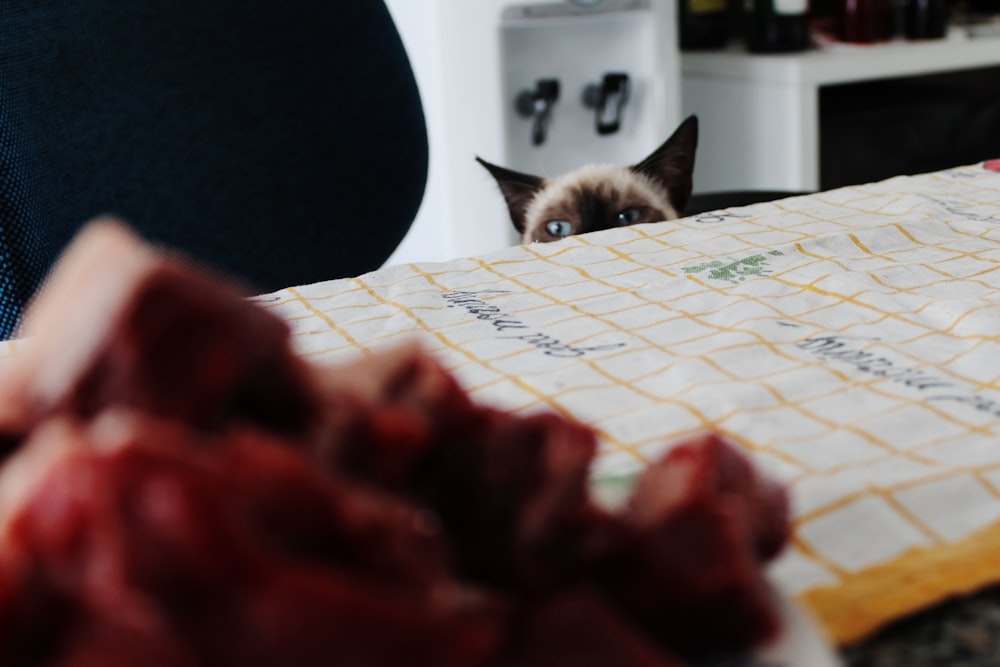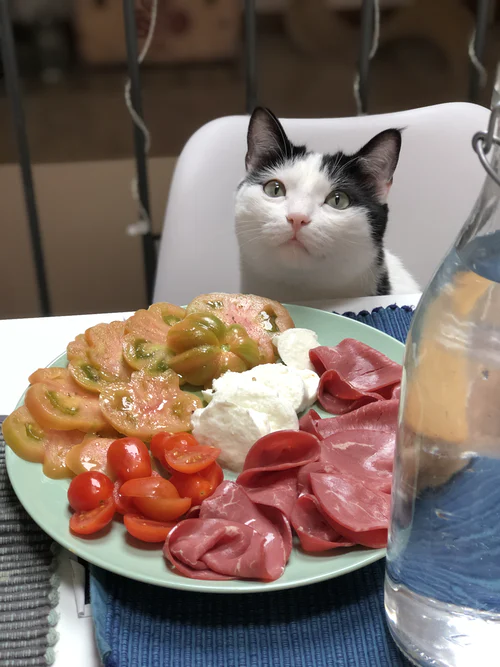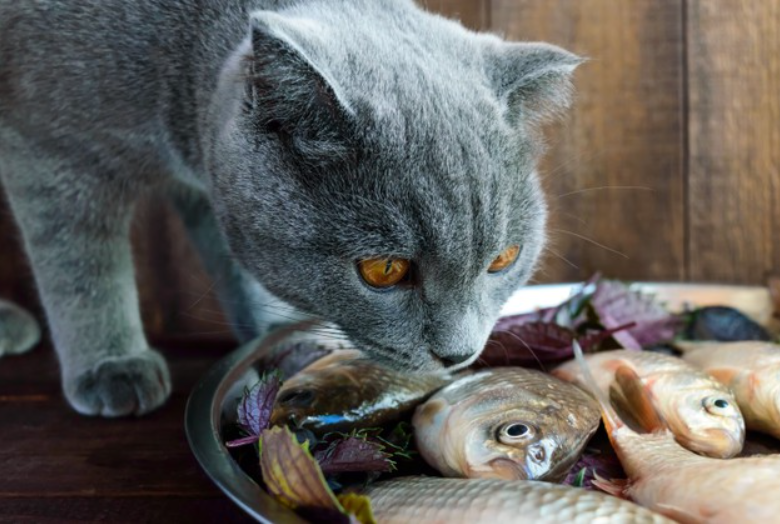How to Prepare Homemade Diets for My Cat?
Posted by ZHOUZHOU

For the daily feeding, we prepare the same collection of pet food then hope our cat will get enough nourishment elements.
The ignored side of the same food supply limits nutrition for their health, The pet owners start to prepare additional self-made meals for their needs.

No matter if you are good at cooking or not, the cat food process will be easy for a cooking starter. The importance of essentials that we need to schedule the cooking materials in advance, Guaranteed for the safe materials.
The research shows cat evolution with raw food habits since history, The processed pet food is unreplaceable for raw meat supplies as cat necessary nourishment demands. But pet owners did not realize the demands of healthy picks for your carnivore.
For the daily feeding, we prepare the same collection of pet food then hope our cat will get enough nourishment elements.
The ignored side of the same food supply limits nutrition for their health, The pet owners start to prepare additional self-made meals for their needs.
As cats age, their dietary needs change.
Cat life stages can be broken down into three periods: kitten (birth–1 year old), adult (1–7), and senior (7+). Since kittens are still growing, they need food that’s high in protein and calories.In addition to fruits and vegetables, there is no way to know the addition ratio of food attractants, sugar, salt, and trace elements. Homemade cat feeds have high water content, rich nutrition, a safe meat source, automatic selection of materials, no additives, low carbon water, and the benefits of eating more fresh meat are numerous. The premise is that you have to understand the correct proportions and preparation methods of cat meals. If you just cook a single piece of meat, you want to use it as the staple food of each meal. The nutrition is not balanced, and it is not dry as cat food on the market.

Hunger breeds discontentment, and the cat is the same.
Diet is the most important thing, cats can only eat what you give. Illness comes from the foods. One day, if something goes wrong with it, you should pay the hospital. It is better to spend more time understanding the nutritional needs of the cat and avoid the risk fundamentally.
About fish

My cat doesn't like fish, what should I do?
1. The cats originated in the desert. This species did not come into contact with fish in the first place. Only from the perspective of palatability, cats eat because fish is very fishy. In the category of cats, fishy represents freshness. It is normal not to like to eat fish. Fish is not a natural diet for cats, and the fat% is too low to become a staple food for cats. It is okay to eat some sea fish appropriately. (sea fish for 10%)
2. Fish must be steamed. Raw fish will have parasites. Steaming is better than boiled to avoid loss of taurine. Cooked fish must be dewormed regularly. The cooked one is not fishy, but the cat does not necessarily eat it. It is okay to respect the taste of each cat, but the nutrients should not be lost. Give priority to steaming fish for cats. Also you can buy natural fish oil to supplement fatty acids.
3. Marine fish are rich in vitamin D and iodine, but heavy metal pollution should also be considered. For example, tuna is not recommended for homemade processing. We recommend mackerel, mackerel, mackerel, saury, herring, salmon, and other natural marine fish that are relatively easy to buy, nutritious and have few bones.
About vegetables
Since cats are carnivores, do I need to add vegetables to cat food?
1. Actually not necessary, although cats can eat some vegetables, such as wheatgrass/carrots/pumpkin, etc., to increase fiber, promote digestion in the cat’s stomach and relieve constipation. However, the cat's body functions cannot internally convert the carrots it eats into carotene. Similarly, other fruits and vegetables are non-essential. You don’t need to buy all the cat food that mixes a lot of broccoli, greens, even blueberries, and strawberries on the market.
2. Do not put vegetables that have been smashed and frozen in cat food for a few days with the meat. Low-temperature freezing will cause the nutrient loss of vegetables, which will eventually turn into starch and fiber, which will increase the burden on the cat's stomach and intestines. This goes against the original intention of making cat meals without starch and grains. Replacing animal protein with plant protein to save costs is the starting point of cat food supplier businesses, and we don’t need to do this.
About internal organs
Do cats need to eat offal?
As cats age, their dietary needs change. Cat life stages can be broken down into three periods: kitten (birth–1 year old), adult (1–7), and senior (7+). Since kittens are still growing, they need food that’s high in protein and calories. Adult food is the most common type on the market and suits the nutritional needsof cats ages 1 to about 7.
The liver is very nutritious. Don't listen to the rumor that cats will be poisoned if they eat the liver. In fact, most of the internal organs' vitamins and minerals need to be eaten but not excessive. (about 5%-10% offal from cat foods)
2. Taurine is very important. It cannot be synthesized by the cat's body, and it is an essential amino acid for survival.
About the ratio of calcium to phosphorus
What does it mean that the ratio of calcium to phosphorus has always been balanced?
Generally, meat is high in phosphorus and low in calcium, so you need to pay attention to adding calcium powder when cooking cat meals. Crustaceans such as shrimp skins and crab shells cannot pass through calcium sources and are mainly composed of chitin/chitin, which cannot be effectively absorbed and utilized.
About the meat
Is it best for cats to eat pure lean meat?
1. No, you can bring some fat. Fat is one of the three major nutrients for cats, and 50% of the cat's content needs to be obtained from the fat. Oil's OMEGA-3 (ω-3/Ω-3) and OMEGA-6 (ω-6/Ω-6) are very helpful for cat's enteritis and dermatitis, and the content of chicken thigh meat is quite good.
2. Chicken breast, duck breast, rabbit, pigeon, and quail are all meat with very low-fat content. If you eat it alone, it is only suitable for snacks. A diet meal is another matter. Meat, such as chicken leg, lean beef, etc.
Seven, about freezing sterilization
Isn’t cat food cooked and eaten?
1. Prepared cat food should be frozen in the refrigerator for at least 3-5 days before eating. Freezing can avoid some parasite problems, and can inhibit and kill some bacteria, but not all of them. Note that if the cat does not finish eating within half an hour, the meat should be taken away and discarded.
2. Fortunately, the esophagus and body of carnivores are relatively short, and the pH value of gastric acid is very low. Alkaline and neutral bacteria will be killed by gastric acid, and most of the others will be replaced outside the body if they are too late to reproduce. Parasites are not a big problem, normal deworming, regular physical examinations.
About meat materials
With so many types of protein, what do you choose for cats?
Common meat materials for cat rice include: skinless chicken thigh, beef heart, chicken heart, duck liver, beef liver, mussels, green fish, lean pork, eggs, ostrich leg, rabbit, venison, etc. (Cat food accounts for 80%-85%)
Recipe example: skinless chicken legs 22%, beef hearts 16%, pork lean meat 15.6%, chicken hearts 15%, mackerel 10.5%, eggs 9%, duck liver 4.3%, beef liver 4%, mussels 3.6%.
About nutriment supplements
Do I have to add those nutriment supplements to make cat food?
1. Most nutritious meats can be satisfied, but there are still some areas that cannot be fully taken into account. Nutrition tablets need to be supplemented, but the dosage needs to be controlled. The eggshell powder can replace the bones to supplement calcium. The bones are not easy to handle and will scratch the cat's esophagus. Mussels are a good and natural source of manganese.
2. List the name and dosage directly:
Vitamin B1 tablets/multivitamin B tablets (add 2 tablets to 500g cat rice)
Calcium carbonate/eggshell powder (500g plus 3g)
Potassium iodide tablets (500g cat food plus half a tablet-1 tablet)
Taurine powder (500g cat food plus 0.5g)
Vitamin E (add 1 capsule to 500-1000g cat food)
Fish oil (add 1-2 capsules to 500g cat food)
Manganese tablets/seaweed powder (add 1-2 tablets to 10kg cat food)
X. About the production process
Will it be troublesome to make?
No. Simply put, buy all kinds of meat, chop, and stir, freeze for a few days, thaw and steam, add some nutritional tablets, and wash the dishes after eating.
- Step 1: Purchase ingredients and make them proportionally
Adult cats of normal weight eat approximately 120-160g of cat meal a day. How many kilograms of total raw materials are prepared at a time depends on how much you can alternate. Generally, you can prepare a week or half a month and a half month of feeding. Ingredients in other proportions only require simple proportion calculations and a scale accurate to the gram.
The content ratio of all ingredients is calculated based on the edible part of the ingredients. For example, the mussels commonly used in cat rice, if 100g of fresh mussels are needed, then the corresponding proportion refers to 100g of the pure edible part of the shell meat.
- Step 2: Cut into small pieces/machine mince
- Step 3: Divide each meal into bags
Seal it and pack it into a bag/box and put it in the freezer layer of the refrigerator. You can choose to use a large ice tray/plastic wrap/plastic bag. The ice tray is more environmentally friendly.
- Step 4: Seal and freeze for three to five days
Frozen below -20°C, ordinary meat for more than three days. Pork, beef, high-risk meat, take longer.
- Step 5: Thaw before eating and add Kelp-Based Supplement
Add the nutritional elements of protein in cat meals in proportion. If it is considered that cats cannot accept cat meals without attractants at the beginning, they can be mixed with wet food such as canned staple food and fed together.
 hello@pawoof.com
hello@pawoof.com 13620 Benson Ave.Suite B,
13620 Benson Ave.Suite B, 1-302-428-9982
1-302-428-9982